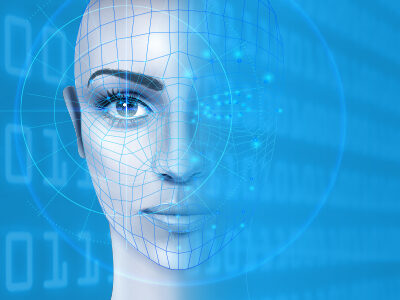Deepfake- The Dark Face of AI
What is Deepfake?
Deepfake refers to an AI-based technology which is used to produce or alter the contents of a video, thus showing something that didn’t occur in reality.
A deepfake video is usually created by using two competing Artificial Intelligence systems. The first system is known as the generator, and the other is called a discriminator. The generator system is used for creating a fake video clip, which in turn asks the discriminator to determine whether the video clip is real or fake. Every time, when the discriminator has accurately identified a fake video clip, the generator receives a clue regarding what not to be done when the next video clip is being created.
Detecting Deepfakes
The detection of deepfakes is a difficult problem. Any amateurish deepfake can be detected normally by the naked eye. Other signs of detecting deepfake by machine could possibly include- lack of eye blinking or false shadows. GANs are generating deepfakes, which are getting better with time and sooner there will be an increased dependency on the digital forensics for detecting deepfakes.
Generative Adversarial Network (GAN)
The generator and the discriminator together form a generative adversarial network or GAN. While establishing a GAN, the desired output needs to be clearly identified, and a training dataset needs to be created for the generator system. Once the generator has been begun creating an acceptable level of output, the video clips are now fed to the discriminator. The generator gets better at creating fake videos; the discriminator starts to get better at spotting them and converse also holds true, i.e. as discriminator gets better at spotting fake videos, the generator is getting better in creating them.
Threats from Deepfakes
The threat from deepfakes arises when any user having a computer can create highly realistic manipulated videos on the go. Countermeasures are being developed for anticipating the future state of affairs. The Defence Advanced Research Projects Agency of the USA believes that deepfake videos can become a severe national security problem and is developing new forensic tools for detecting them.
Deepfake technology can affect public figures such as leaders and politicians, as an extensive collection of shots of their faces taken from various angles is required to create the facial models which can be swapped into a fake video. As deepfakes tend to become familiar, there is a likely increase in the pre-release authentication of content which is created by the leaders and politicians by using some kind of digital watermarks. Though this may not include every category of deepfake, still, it could be an effective countermeasure against the creation of false statements by the public figures.
Deepfakes also holds a potential threat to companies. There are concerns about targeted phishing attacks to gain access to business networks. The management figures have large video and audio data in circulation, which acts as a potential base for creating deepfakes. There can be dangers to individuals also. The law enforcement figures might also be deepfaked to exploit the trust of citizens. Attempts at blackmail of targeted individuals are also quite possible if they are having enough photos or videos of themselves on the social media channels to have their faces swapped into another video.
New Uses of GAN
1.Generative Modelling
The real usage of GAN was focused on generative modelling. For instance, the use of generative modelling could be used for creating a face with all the features such as- nose, eyes, and mouth place in an appropriate position. Here, the generator algorithm will be optimized for creating more-realistic faces, and the discriminator would be optimized for its ability to detect fake faces.
Such applications have advanced due to improvements by the use of back propagation functions, which helps the two algorithms to learn faster with lesser computational overhead. In the past few years, these algorithms have evolved from generating low-resolution grayscale images to high-resolution colour faces, due to better algorithms, data sets, and GPUs.
2. Image Translation
Translations create a set of night image of any daylight imagery by improving the navigation for autonomous vehicles which are being driven under challenging conditions. The current image algorithms need supervised learning techniques which involve researchers in capturing and labelling of data about the same road under different weather conditions. GANs automate the process of training a generator that is capable of creating plausible road image sets that simulate different driving conditions. This approach can reduce the human work of capturing data from different states and better training of the autonomous driving algorithms.
3. Dental Uses
The GAN technology approaches could be adapted to work with 3D data for customizing the production of physical products. GANs and 3D printing could be used for building better teeth. Dentists spend considerable time and effort in creating customized dental crowns for each mouth. The challenge remains whether 3D shape will work or not with other teeth, but also it needs to work well with an individual’s bite pattern. When GAN technology is implemented, it works with the 3D data that is captured from a person’s mouth, and thus dentists can generate a nearly-perfect, realistic and functional tooth which could be printed on the dentist’ side.
4. Better Robotics
The training of robots can be carried out in a virtual environment and can be deployed in a real environment. GANs could be used for training different versions of the virtual environment, which are economical in computing terms and data is also a part of realistic simulation.
- Considering Data Centers in India to Overcome Economic Conditions - May 10, 2022
- Determining Why Your Organization Needs Web Application Security - February 11, 2022
- How Does a Business Benefit with Managed Services - January 21, 2022

Awesome blog. Very useful information, it clarified a lot of things to us. Thanks for sharing your view. – seo company in chennai